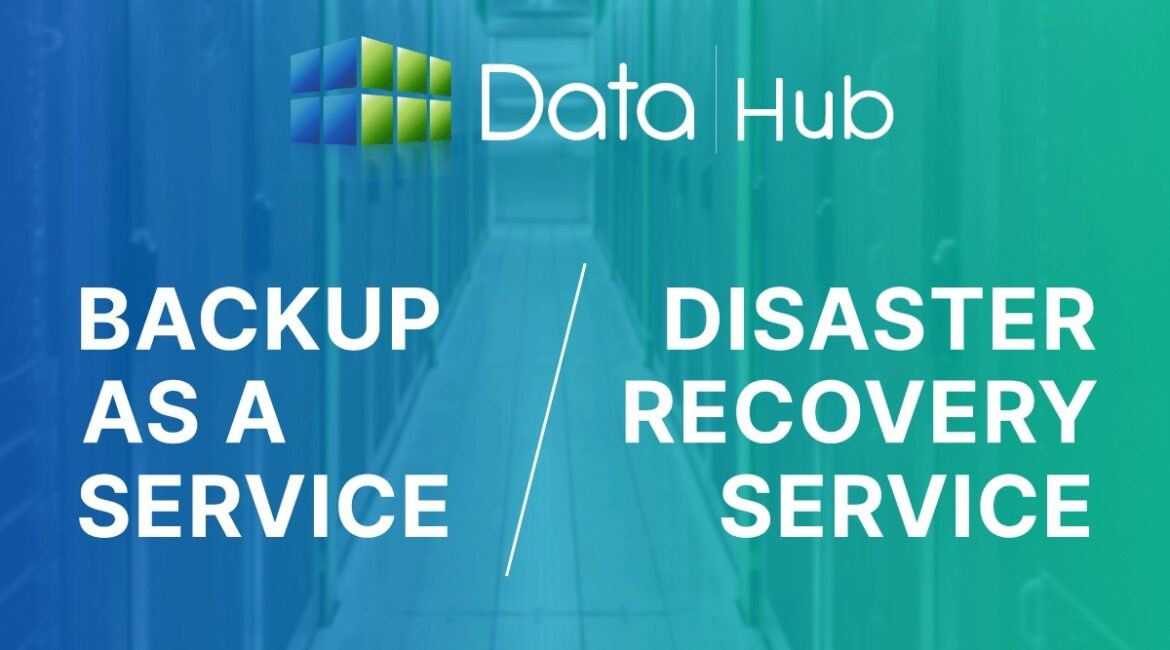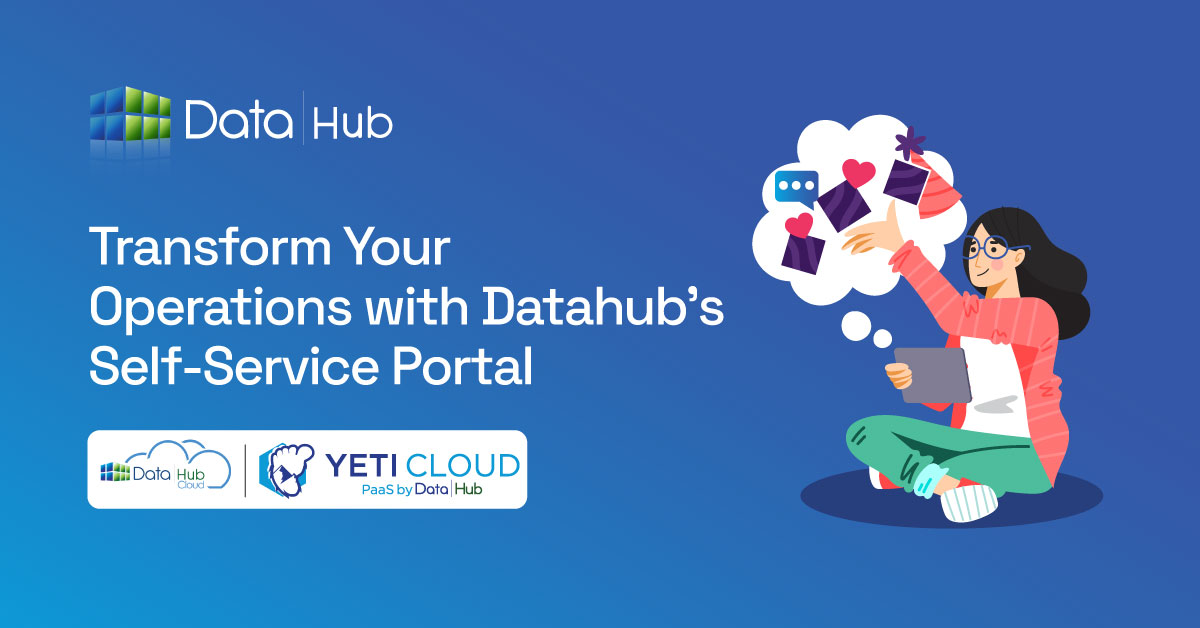Do you think Disaster Recovery (DR) and Backup-as-a-service (BaaS) are the same?
Since they are frequently used interchangeably, it is understandable if you believe they are the same. However in reality they differ in terms of focus, scope, and implementation.
To help you figure out the key differences between them we will be exploring in detail the difference between “Backup-as-a-service” and “Disaster Recovery” in this blog.
Let’s embark on our journey towards understanding them.
Table of Contents
Importance of Data
Whether it be Backup-as-a-service or Disaster Recovery, they play a role in the protection, safety, and recovery of data.
So, before we directly jump into understanding Backup-as-a-service and Disaster Recovery, let’s discuss the importance of data first.
Besides land, property, and others, data is one of the most valuable assets that a company owns these days.
You might find it interesting to know that around 2.5 quintillion bytes of data are created every single day.
With the increase in the creation of data, concerns about the security and safety of data arise. There are several reasons that cause data loss.
Human error, hardware failures, malware and cybersecurity threats, and even natural disasters are some of the major reasons.
No matter what the reason for data loss, companies can face significant losses due to it. Loss of data may lead to financial loss to non-financial loss such as reputation damage and operational disruption.
Taking this into consideration it’s of utmost importance for companies to take data protection and management seriously.
Backup-as-a-service (BaaS) and Disaster Recovery (DR)
Moving ahead let’s now get into understanding Backup-as-a-service (BaaS) and Disaster Recovery.
In this section, we’ll understand what they are and how they help organizations in relation to data.
What is Backup-as-a-Service (BaaS)?
Backup-as-a-service (BaaS) is a cloud-based service model in which the data of an organization is backed up on a remote cloud-based server or data center.
What differentiates it from traditional data storage is that the entire BaaS service is provided by a third-party BaaS service provider.
Traditional data backup involves in-premises storage of data using external hard drives, tape drives, or dedicated servers. In contrast, BaaS involves the backup of data to a remote, cloud-based server.
The BaaS service provider is the one that is responsible for maintaining hardware, software licenses, and cloud infrastructures for the backup of data.
Importance and Benefits of BaaS
There are chances that your organization might be exposed to data loss risks.
As discussed earlier, human error, malware, cyber-attacks, and other unforeseen events can cause data loss.
In case of data loss, having a backup of data can be vital for continuing the operation of organizations. Here are some of the importance as well as benefits of BaaS in such cases,
- Enhanced Data Security and Protection
- Business Continuity
- Quick and Efficient Data Recovery
- Cost Reduction
- Enhanced Scalability and Flexibility
- Ease of Management and Use
- Increased Efficiency and productivity
Make sure you go through Why Backup-as-a-service is important? to know in detail about Backup-as-a-service (BaaS).
What is Disaster Recovery?
Disaster Recovery (DR) is the process that includes the process and strategies that an organization implements to resume and maintain critical business functions and operations in case of disruptive events.
Businesses can face outages due to multiple disruptive events.
Disruptive events are caused due to human induced disruptive events such as user/admin error and ransomware attacks. Natural disruptive events such as tornadoes, floods, or landslides.
And also due to technological failures such as hardware and software failures.
Importance and Benefits of Disaster Recovery
I understand you might be thinking why is disaster recovery needed when Backup-as-a-service itself is capable of backing up and recovering data?
But in reality, if any disruptive events occur due to any unforeseen causes, it will impact the operation of the entire organization.
The backup and recovery from BaaS alone will not be able to resume the entire operation of the business.
While backup and recovery are important, Disaster recovery is a plan and strategy that organizations will need for instant and swift resumption of operations.
So, here are some of the importance and benefits of Disaster Recovery,
- Business Continuity
- Risk Management
- Operational Efficiency
- Downtown minimization
- Strategic Planning and Adaptability
Key Difference Between Backup-as-a-Service and Disaster Recovery
Moving ahead, it’s finally time for us to know the difference between Backup-as-a-service and Disaster Recovery.
So, let’s find out the key differences between BaaS and DR.
1. Purpose:
The primary purpose of Backup-as-a-service is to keep the data backup of the organization safe and secure.
It involves safekeeping data from several risks of data loss such as human error, cybersecurity attacks as well as natural disasters.
On the other hand, the purpose of Disaster Recovery is to be ready with a strategic plan of action that an organization plans to implement in case it is exposed to any disruptive events.
It involves a plan to prepare an organization for instant and swift resumption of operation after the occurrence of unforeseen disruptive events.
2. Scope:
The Scope of Backup-as-a-service is limited to storing, safeguarding, and recovering an organization’s data in the event of data loss.
In contrast, the scope of Disaster Recovery is wider in comparison to the Backup-as-a-service.
Disaster Recovery involves a plan and strategies an organization will require in the event of disruptive events.
It encompasses an entire plan of action that will answer how, who, and what will an organization do after facing disruptive events to resume its operations instantly.
Disaster Recovery not only is limited to the recovery of data. It involves the recovery of systems, applications, and infrastructure to ensure continuity of business operations.
3. Recovery Objectives:
The recovery objectives of both BaaS and DR involve the Recovery Time Objective (RTO) and Recovery Point Objective (RPO).
Let’s get to know about them and how these differ,
i. Recovery Time Objective (RTO):
Recovery Time Objective (RTO) is the maximum acceptable amount of time for an organization to recover its data and restore its network, application, and systems.
ii. Recovery Point Objective (RPO):
Recovery Point Objective (RPO) is the maximum acceptable amount of data that an organization can lose after recovery from unforeseen disruptive events.
Backup-as-a-service (BaaS) is limited to storing, protecting, and recovering the data of an organization.
Since BaaS only includes recovering individual files, folders, and datasets of an organization, the RTO as well as RPO is a bit flexible.
Disaster Recovery involves recovery of the entire IT environment in addition to the recovery of data.
From recovery of data to making the entire IT infrastructure resume its operation swiftly, Disaster Recovery has rigorous RPO and RTO. DR aims for minimum recovery time and minimal data loss.
4. Use Cases and Complexity:
Backup-as-a-service is commonly used for routine data protection. Organizations use Backup-as-a-service when the primary goal is to store, protect, and recover data in cases of loss.
These solutions are often considered simple to operate and are cost-effective.
Whereas disaster recovery is used in situations when organizations face critical situations that involve extensive disruptions.
As it involves disruptions in the entire IT infrastructure, disaster recovery involves complex procedures and might involve higher costs.
5. DataHub for BaaS and Disaster Recovery:
Whether it be Backup-as-a-service or Disaster Recovery, DataHub ensures quality services in both of the cases.
As Nepal’s leading and most trusted data center and cloud service provider, DataHub offers both Backup-as-a-service and Disaster Recovery.
With DataHub for BaaS and DR, you can ensure that all of your business infrastructure is available and accessible during the time of disasters.
Why DataHub for Backup-as-a-Service(BaaS)?
DataHub as a Backup-as-a-service (BaaS) provider provides disk-based backup solutions to keep your organization’s data safe and secure.
In addition to that it has powerful systems that are powerful and effective for minimizing recovery time with point-in-time restoration features.
Here are reasons why to choose DataHub as a BaaS provider :
1. Automatic Scheduled Backup:
This allows you to schedule backups regularly and as per your need.
2. Concurrent Backups:
Gives you options to initiate concurrent backups to multiple destinations. This ensures redundancy and increases the efficiency of data recovery.
3. Block-Level Incremental Backup:
Makes your backups as efficient as possible.
4. Multiple Backup locations:
DataHub has two sites for backup. This ensures the safety, security, and recoverability of data in case of disaster.
5. Point-in-time Restoration:
Allows you to restore the database to the state it was at any point in time.
Why DataHub for Disaster Recovery?
DataHub offers Disaster Recovery as a Service (DRaaS) to help your organization minimise the impact of downtime caused by disaster and disruptive events.
Whether it be a disaster caused by humans or a natural disaster, DataHub helps to bring your business-critical applications back to operation as fast as possible.
Let’s get into some of the reasons, why you should be choosing DataHub for Disaster Recovery,
1. Use of Industry Leading Technologies:
DataHub has simple, flexible, and scalable comprehensive DR solutions powered by COMMVAULT and ARCSERVE.
2. Centralized management:
A single interface through which you can ensure the availability of data and business continuity.
3. Security of Data:
Encryption of data so that your confidential information is safe and secure.
4. Multi-platform Support:
DRaaS from DataHub supports multiple data types, databases, applications, operating systems, and hypervisors.
5. Easy Deployment:
Flexibility to deploy DR solutions to-and-from and on-premises, and across public and private clouds.
6. Cost Efficiency:
Gain higher performance and reliability without upfront capital investments and flexible monthly billing.
Conclusion
Data is one of the most valuable assets a company owns today.
As the creation of data is growing rapidly, concerns related to the security and protection of data are also increasing.
Data loss can cause significant losses to organizations. This makes it important for organizations to take necessary measures to mitigate data loss.
Backup-as-a-service(BaaS) and Disaster Recovery (DR) are used interchangeably most of the time.
However, there are some differences between “Backup-as-a-service” and “Disaster Recovery”.
They differ mainly in terms of purpose, scope, recovery objectives, use, and complexity.
Backup-as-a-service primarily focuses on protecting, backing up, and recovery of data.
On the other hand, Disaster Recovery involves the entire process and strategies that an organization implements in case of disruptive events to bring back the entire IT infrastructure into operation.
DataHub as a leading and most trusted data centre and cloud service provider, provides both Backup-as-a-service (BaaS) and Disaster Recovery as a service (DRaaS).
With quality and reliable BaaS and DRaaS from DataHub, organizations need not worry about losing their precious data and instantly continue their operations in case of any disruptive events.





